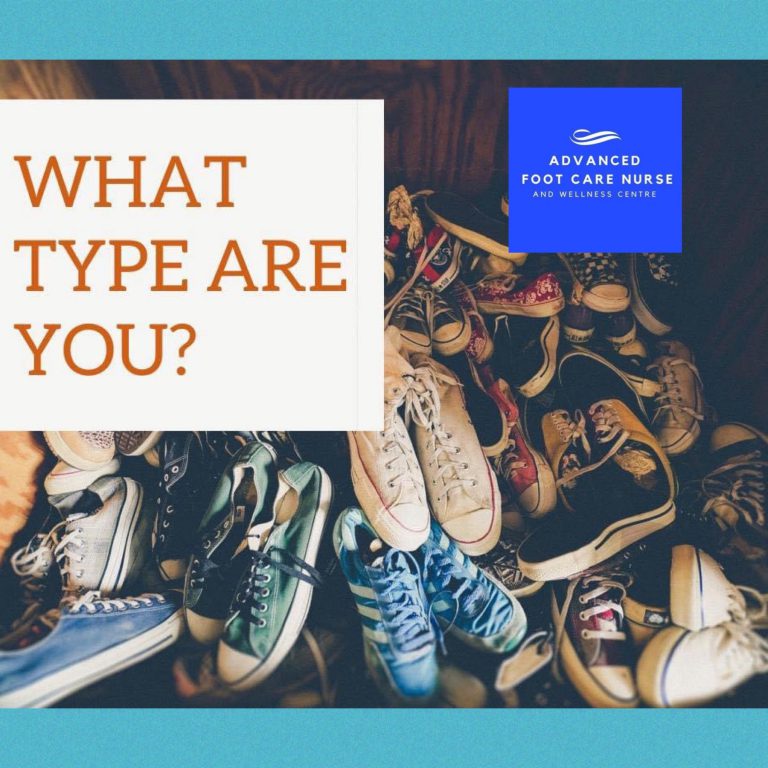

There are four main foot types, and each can tell you which type of shoes will bring you the most comfort and be better for your body over time.
To find out which category you belong in, simply wet your foot and step on dry pavement or on a piece of paper laid out on a flat surface.
Observe your footprint to see which of the following four foot types it most resembles:
1. Neutral foot: Your big toe, ball of foot and heel are all represented in equal measure and resemble what some would say a “typical” footprint; you see only a small part of the middle of your foot, where the arch is located
2. Flat foot (low arch): You see most if not all of your foot in your footprint, including the middle part called the arch of the foot.
3. Pes cavus (high arch): Only your toes and a small part of your heel and a small part of the ball of your foot are visible in your footprint.
4. Supinated foot: Your footprint makes a C-shape, with the outside of your foot being most represented. We call this type of walking under pronation.
So, now what kind of shoes are for you?
Once you’ve figured out your foot shape, here’s what to keep in mind when shoe shopping.


GET IN TOUCH WITH US

MONDAY: 9:00AM – 5:00PM
TUESDAY 9:00AM – 5:00PM
WEDNSDAY 9:00AM – 7:00PM
THURSDAY 9:00AM – 5:00PM
FRIDAY 9:00AM – 5:00PM
SATURDAY 9:00AM – 4:00PM
SUNDAY 10:00AM – 2:00PM
Email:
info@advancedfootnurse.com
Fax Number: (226) 216-5402
| Cookie | Duration | Description |
|---|---|---|
| cookielawinfo-checkbox-analytics | 11 months | This cookie is set by GDPR Cookie Consent plugin. The cookie is used to store the user consent for the cookies in the category "Analytics". |
| cookielawinfo-checkbox-functional | 11 months | The cookie is set by GDPR cookie consent to record the user consent for the cookies in the category "Functional". |
| cookielawinfo-checkbox-necessary | 11 months | This cookie is set by GDPR Cookie Consent plugin. The cookies is used to store the user consent for the cookies in the category "Necessary". |
| cookielawinfo-checkbox-others | 11 months | This cookie is set by GDPR Cookie Consent plugin. The cookie is used to store the user consent for the cookies in the category "Other. |
| cookielawinfo-checkbox-performance | 11 months | This cookie is set by GDPR Cookie Consent plugin. The cookie is used to store the user consent for the cookies in the category "Performance". |
| viewed_cookie_policy | 11 months | The cookie is set by the GDPR Cookie Consent plugin and is used to store whether or not user has consented to the use of cookies. It does not store any personal data. |